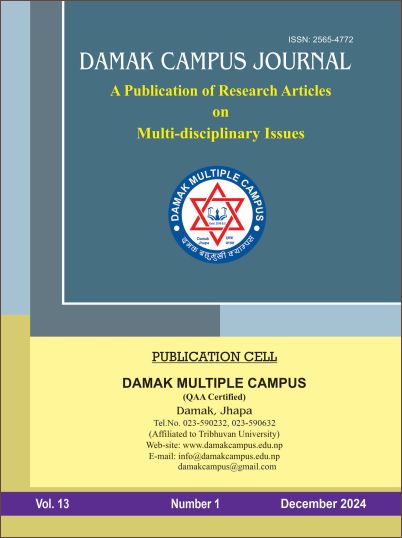Progress of Diversity and Inclusion in Nepal
DOI:
https://doi.org/10.3126/dcj.v13i1.74668Keywords:
Exclusion, identity, inclusive, representation, underprivileged, quotaAbstract
Nepal is a country with a rich tapestry of diversity, with its population varying across caste, region, religion, race, and ethnicity. This diversity has historically led to significant social exclusion, contributing to political, social, and economic inequalities. The 2063 Interim Constitution of Nepal aimed to address this by ensuring the inclusion of marginalized and minority communities, giving them a platform to influence national policy. This paper seeks to examine the current state of inclusivity for diverse groups in Nepal and analyze its impact on society from economic, political, and social perspectives. Both primary and secondary sources were utilized for this study. The research focuses primarily on the issue of diversity and inclusion in Nepal. The 2007 Interim Constitution further enshrined the principle of equality, stating in Article 13, Clause 3 that no law should prevent the creation of special provisions for the protection, empowerment, or advancement of women, Dalits, ethnic nationalities (Adivasi-Janajati), Madhesis, farmers, laborers, or any class that is economically, socially, or culturally disadvantaged, as well as children, the elderly, disabled individuals, or those with physical or mental impairments. These constitutional guarantees paved the way for the introduction of the reservation system in Nepal’s political and civil service sectors.




